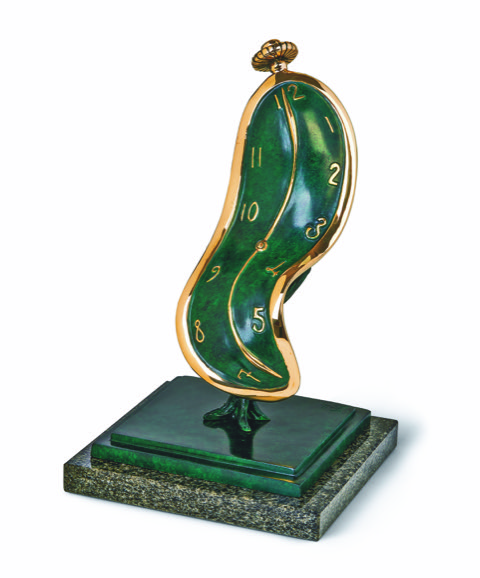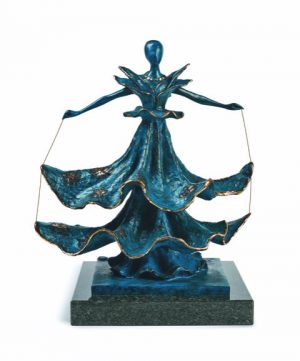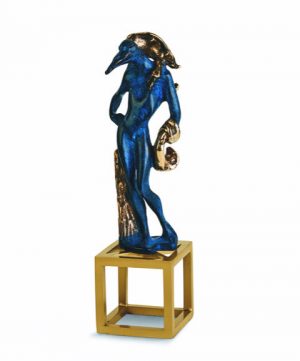DANCE OF TIME I
The melting clock is the most recognizable Dalinian image and the artist chose to portray it consistently throughout his lifetime. Dalí became obsessed with the concept of time and used the melted watch image in many of his works.
Dalí brings to this sculpture a dynamism, where the clock appears to be literally “dancing”. Unrestrained by the rigid laws of a watch, time, for Dalí, moves to the rhythm of a perpetual dance, speeding up, slowly down, stretching out, liquefying.
The clocks illustrate an important theme in Dalí’s art;the contrast between the hard and the soft, a central preoccupation of the artist.
Dalí flips reality, taking the familiar image of a watch which is hard, solid and precise and inverts its characteristics. It is now the opposite, becoming soft, inaccurate, time bends to individual meanings. Again in this sculpture, the unexpected softness of the watch contrasts with the hardened sturdy tree trunk upon which the clock rests.
Some say that Dalí represents in his watches Albert Einstein’s theory of relativity of space and time; the dancing watch illustrating the concept of movement through time.
The Dance of Time I is presented alongside Dance of Time II and Dance of Time III.
Date: conceived in 1979, first cast in 1984
Material: bronze
Technique: lost wax process
Edition size : 350 + 35 EA
Height : 38,5 cm
Edition : patina green
Maquette: original gouache, Dance of Time, 1979
Direct intervention (created by Dalí): the idea, image, and original maquette
Indirect intervention (created by artisans): lost wax process and patina






